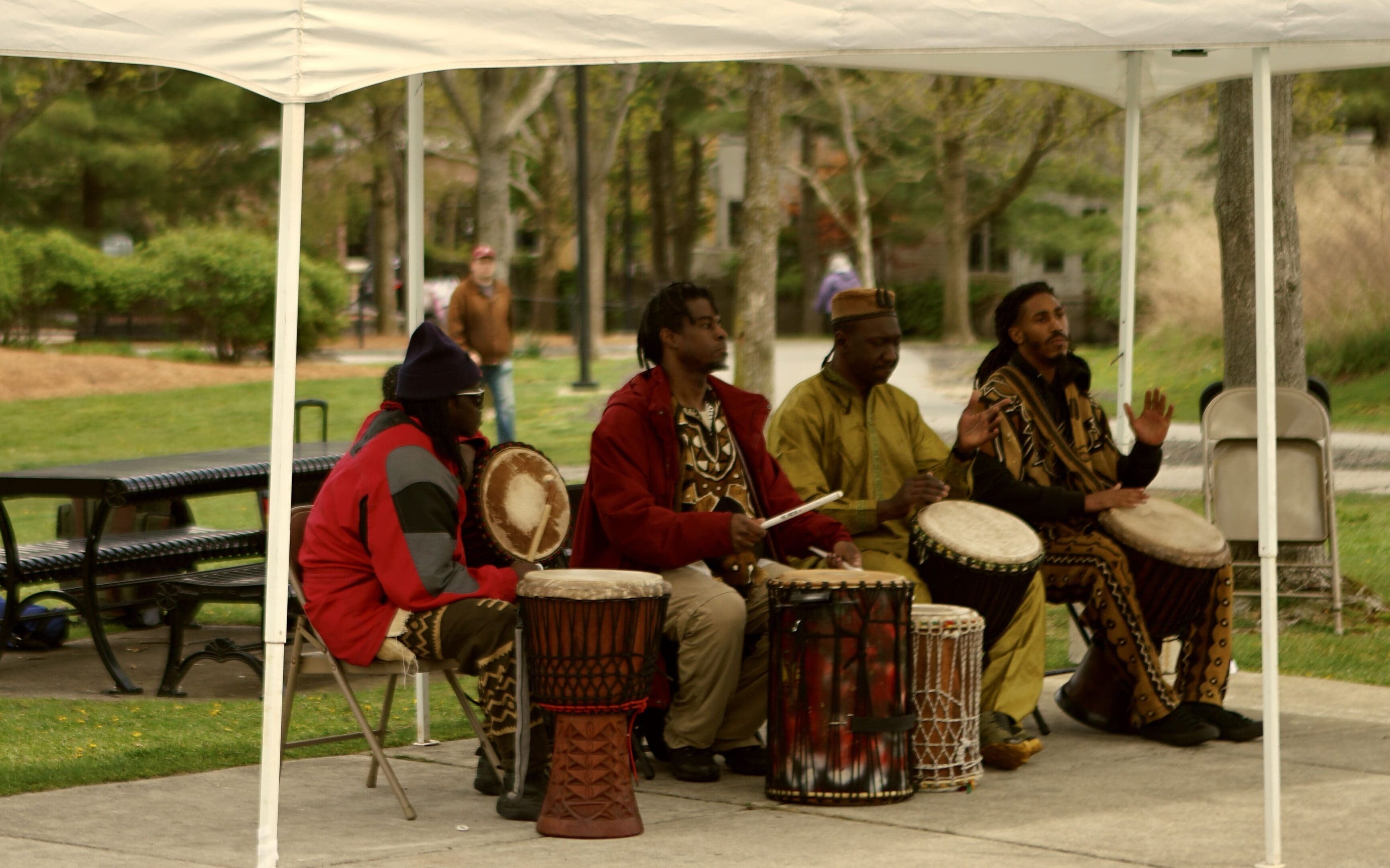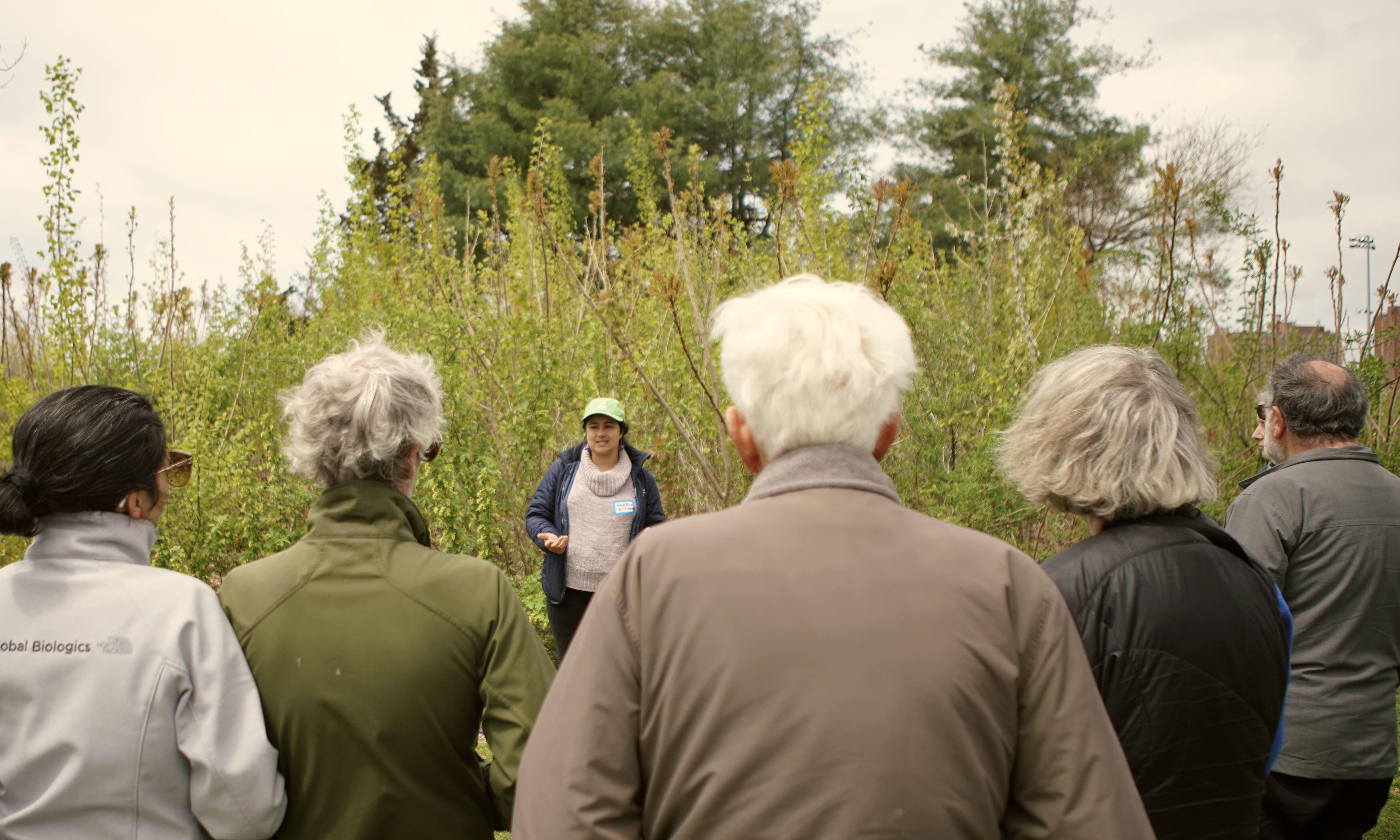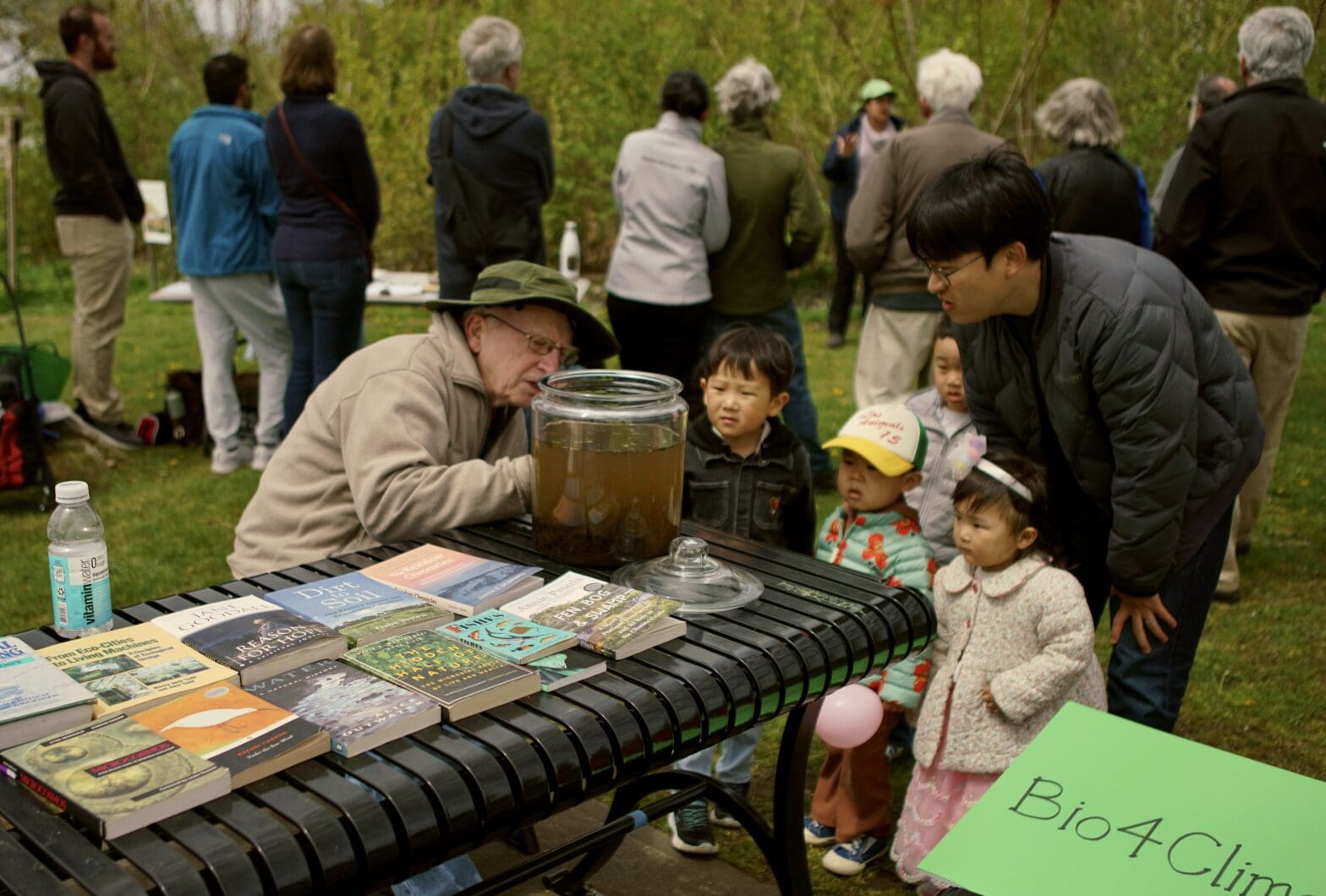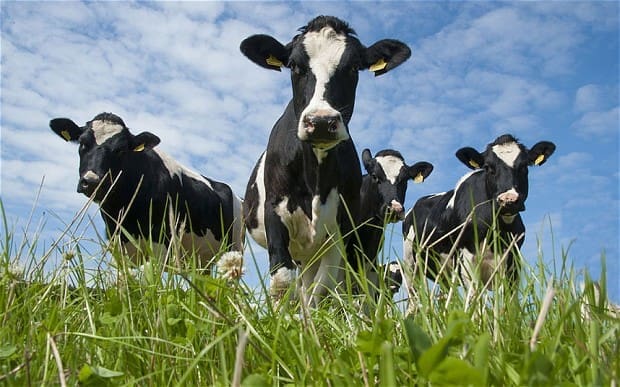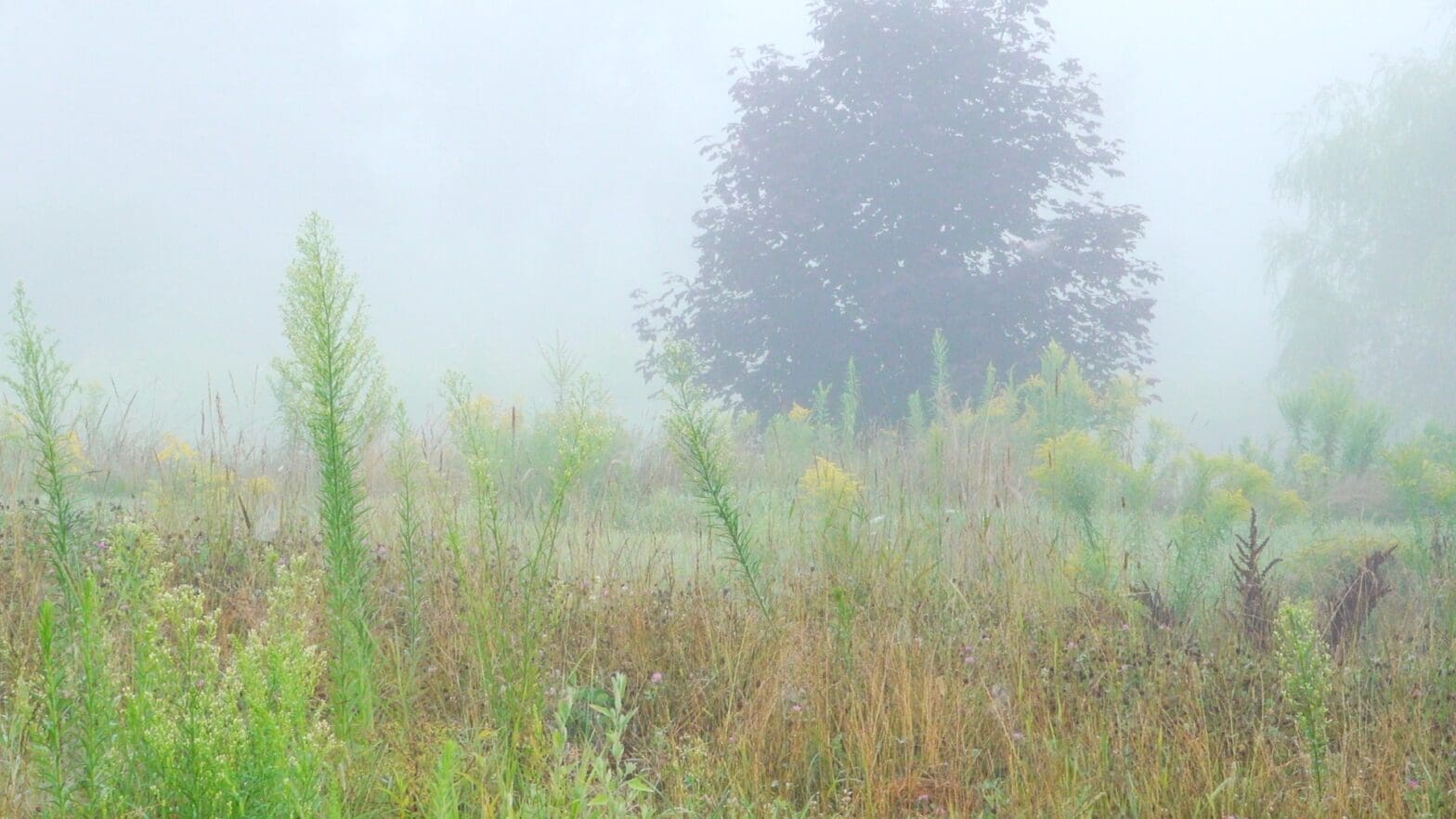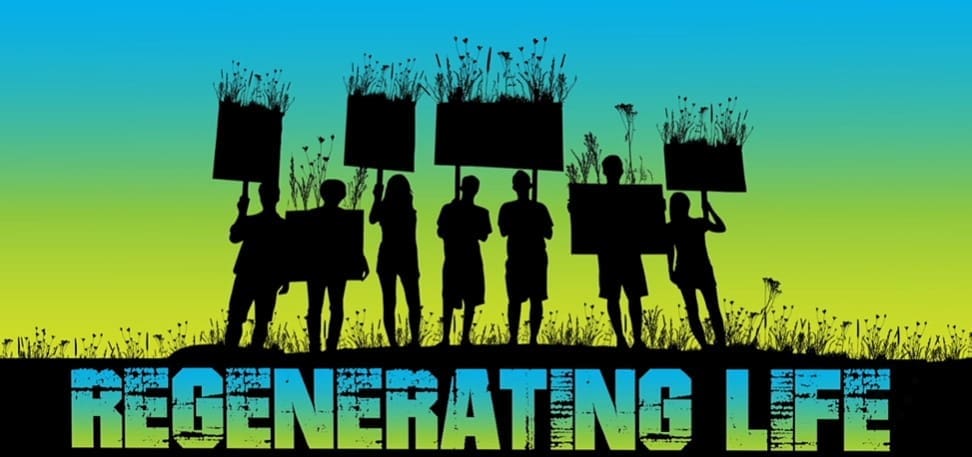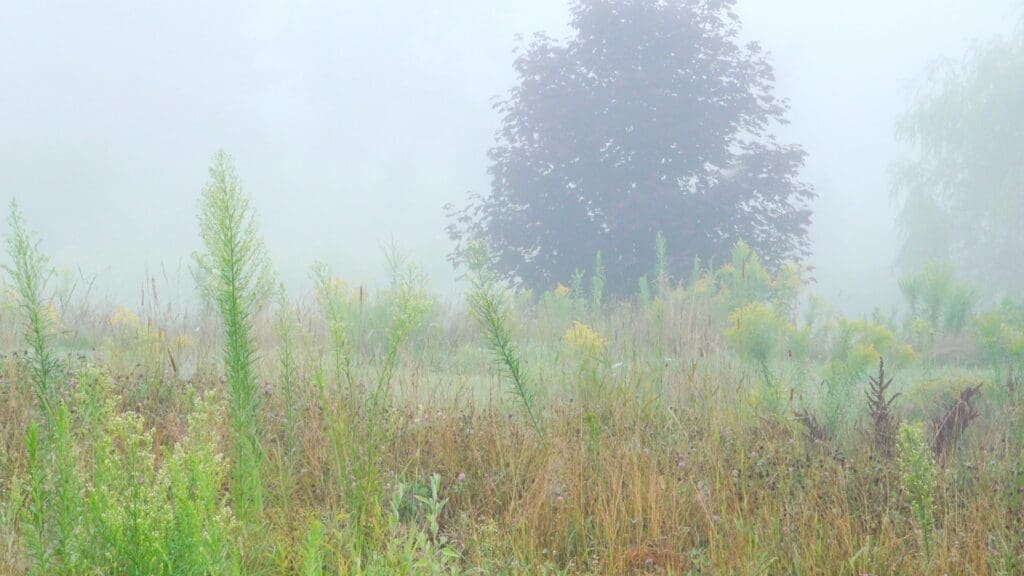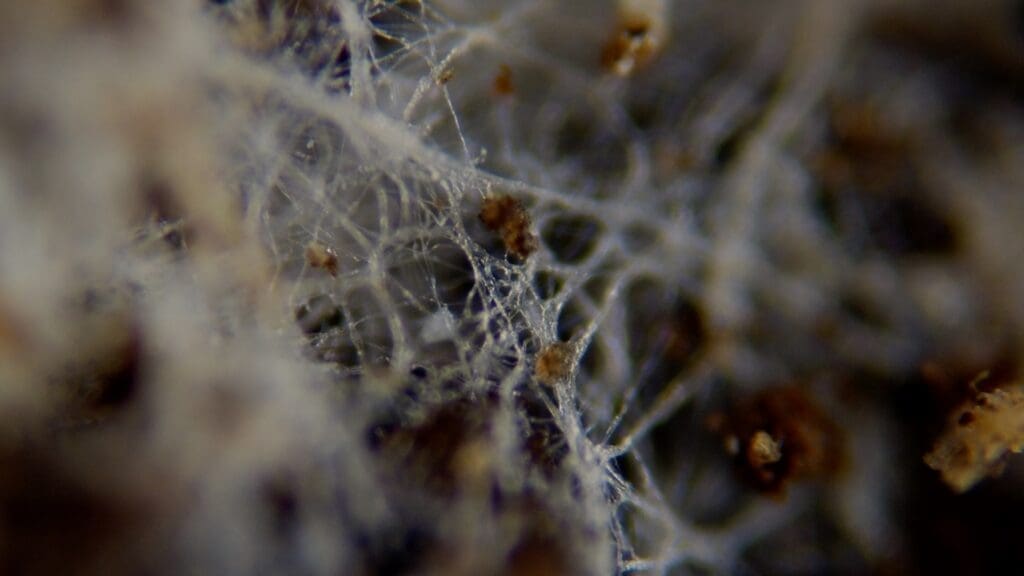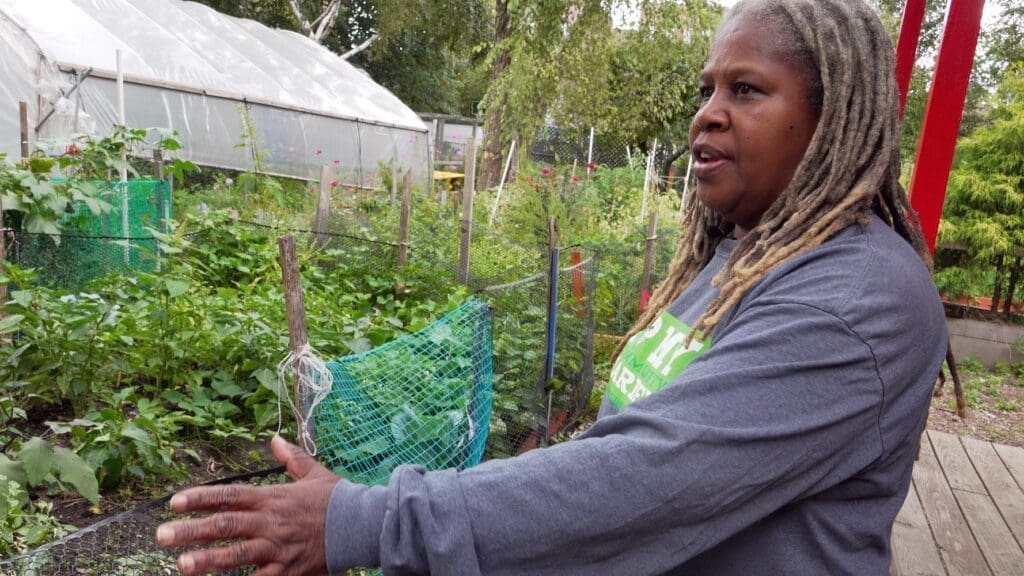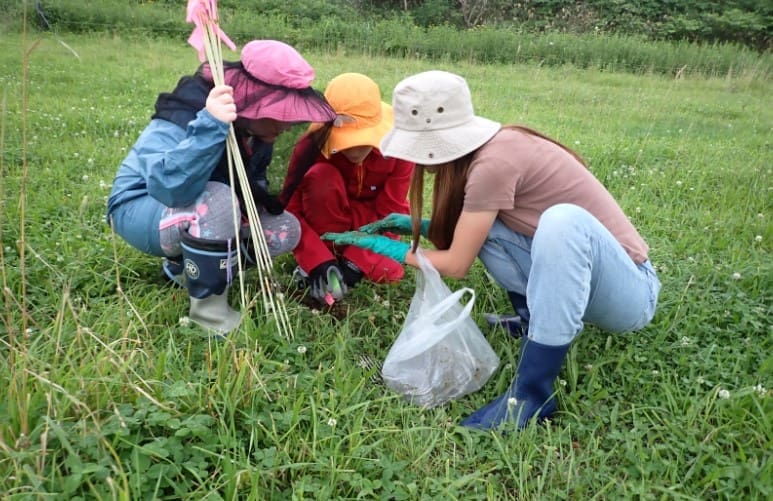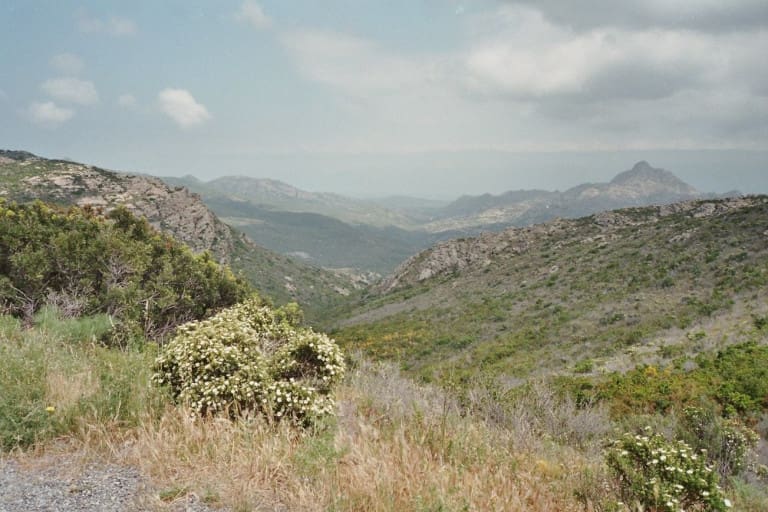Regenerative Grazing: A Compelling Climate Strategy
By Lynne Pledger
Shifting from feedlot farming to rotational grazing is one of the few changes we could make that’s on the same scale as the problem of global warming. It won’t do away with the need for radically cutting emissions, but it could help get the car exhaust you emitted back in high school out of the atmosphere.
—Bill McKibben[1]
When the media covers environmental problems caused by industrial beef production, the vital alternative—regenerative grazing— is typically ignored or misconstrued. But the climate crisis makes it imperative that our society understands how grazing cattle can combat global warming and protect natural resources, especially water. Scientists know considerably more about grazing, grassland ecology, and climate change now than they did fifty years ago when some of the prevailing beliefs about raising cattle were formed.
Given this body of knowledge, it is mind-boggling that 96% of US beef comes from cattle fattened in feedlots, where they spend several months eating corn and other inappropriate feeds, which are industrially produced and trucked to their pens. In contrast, grass-fed cattle (still a small fraction of the cattle market) spend their entire lives grazing in pastures—as their bodies are designed to do—and eat no corn ever. In our recent book, Grass-Fed Beef for a Post Pandemic World: How Regenerative Grazing Can Restore Soils and Stabilize the Climate (Chelsea Green, 2022), Ridge Shinn and I contrast the environmental impacts of two models: conventional, corn-fed cattle vs. regeneratively raised, 100% grass-fed cattle. We echo the call of many scientists and agriculturalists around the world for a transition from the conventional beef model to regenerative grazing—not just to produce meat, but as a strategy to stabilize the climate, repair water cycles, and protect eco-services harmed by agriculture’s status quo.
Regenerative grazing is a set of proven practices based on the synergy of cattle, the pasture plants they eat, and robust populations of soil microbes (microscopic organisms). This paper, citing peer-reviewed journals and case studies, offers an overview of how this synergy combats climate change and provides multiple environmental benefits. Although our book addresses related topics as well (e.g., human health, animal welfare), these pages focus on the specific mechanisms by which regenerative grazing reduces or avoids release of greenhouse gases (GHGs), increases carbon sequestration, and builds climate resilience.
Nature’s way
Many of the climate solutions under consideration or being developed are high-tech, high-cost, and unimaginably high-risk. For example: dimming the sunlight by spraying the stratosphere with aerosols,[2] fertilizing the oceans,[3] vacuuming carbon dioxide out of the sky.[4]
In contrast, regenerative grazing is a safe approach based on two natural systems: (1) photosynthesis (i.e., plants remove carbon from the air and send some of it to their roots), and (2) carbon sequestration (i.e., microbes take carbon from the roots and stabilize some of it in soil). Regenerative grazing fosters both these systems, thereby addressing not only carbon that has accumulated in the atmosphere, but also the shortage of carbon that has depleted soils globally.[5] The two problems are directly connected.
Carbon is the building block of life found in all living things. Carbon atoms continuously travel throughout the earth’s crust, the oceans and the atmosphere. But when humans transitioned from hunting and gathering to farming about 12,000 years ago, their activities began to upset the natural carbon cycle, allowing more carbon to escape the earth and eventually cause global warming.[6] Our agricultural practices (growing crops as well as raising livestock) have also led to loss of soil carbon and the disappearance of fertile topsoil from farmland around the world, including a third of the cropland in the US that was once known as our nation’s breadbasket.[7]
Soil microbes have essential roles in restoring degraded soil and also maintaining a climate that keeps earth habitable. Regenerative grazing (part of the larger regenerative agriculture movement) supports flourishing populations of these invaluable, unseen allies.
Soil science research continues to reveal important information about mycorrhizal fungi, which are microbes that live in, on, and around plant roots. In June 2023, Current Biology published “Mycorrhizal mycelium as global carbon pool,” a study of fungal mycelium, the vast network of filaments produced by fungi and found beneath grasslands and forests. A release from the University of Sheffield states,
“The discovery by a team of scientists, including researchers from the University of Sheffield, that fungi is storing over a third of the carbon created from fossil fuel emissions each year indicates that it could be… the most effective carbon capture storage unit in the world [italics mine]… At the current rate, the UN warns that 90 per cent of soils could be degraded by 2050, which could be catastrophic for not only curbing climate change and rising temperatures, but for the productivity of crops and plants too”.[8]
Some natural history is relevant here. Bison were a keystone species in the creation of the
deep, carbon-rich soil of the Great Plains. This fertility was only partly due to the animals’ manure and urine; their grazing was even more significant. As these early ruminants moved across the plains in vast herds, their grazing triggered a chemical feedback mechanism in the grasses and other rangeland plants, causing them to release carbon compounds into the soil. These compounds attracted soil microbes, notably mycorrhizal fungi. Because the fungi—then and now— need carbon to grow, they “trade” nutrients from soil, for carbon from plant roots and sequester (stabilize) some of this carbon in humus. Details on these processes follow.
Bison and cattle are both ruminants and bovines. On modern regenerative farms and ranches, cattle are managed in a way that mimics the functions of the ancient bison in terms of stimulating soil microbes that cycle nutrients and store carbon. Today’s regeneratively managed pastures benefit from the same interaction of ruminant animals, grasses, and microbes that brought about the health and fertility of grasslands around the world, long before human evolution.[9] The good news is that the time frame for restoring our degraded grasslands to rich, well-functioning ecosystems can be surprisingly short.
The key to relatively quick results is the multi-paddock rotational grazing system. Unlike conventional rotational grazing, this updated method allows a herd to move frequently from one area to the next, in a rotation of paddocks. A skilled grazier (i.e., a family member, farm manager, or other experienced person) ensures that a grazed paddock has fully regrown before the herd grazes it again. (Many grass-fed beef producers utilize flexible fencing to create temporary barriers that prevent the animals from going back to a grazed area before this rejuvenation is complete.) While the grazing period for each paddock is short—the bovines eat no more than the top halves of the plants before moving on—the regeneration period for a grazed area is much longer. During this time the land may appear to be “resting” because the underground activity is unseen: microbes are multiplying, transporting nutrients to plants, and storing carbon in the soil; roots are growing longer as the grasses and other pasture plants grow tall.
In dry regions of the US such as the Southwest, grazing managers plan for only one rotation through the paddocks per year, whereas in wet regions, such as the Northeast, a paddock might be grazed three times in a single season. Grazing plans are modified frequently according to the condition of the grassland as well as the condition of the animals.
In only a couple of years, farmers and ranchers who utilize this method notice improvements in their land, including increased productivity and resilience to droughts and flooding.[10]
Underground climate activists
For decades, schoolchildren have learned that plants take carbon dioxide from the air and send carbon to their roots (and leaves and stems) as part of photosynthesis. By the end of the twentieth century, developments in soil science had clarified how photosynthesis links to additional crucial processes: cycling nutrients, storing carbon in humus, and providing soil structure. As I’ve indicated, these tasks are carried out by soilmicrobes, and scientists have only recently realized the scope and importance of their eco-services.
Fungi and bacteria are perhaps the smallest and most effective climate activists. They combat climate change in at least three ways delineated in this paper:
1. By transporting carbon from plant roots and sequestering it in soil,
2. By providing water and essential nutrients to plant roots: not only trace elements but also plant-available nitrogen and phosphorous. (The alternative being synthetic fertilizers, whose production and application contribute to climate change and have caused a major pollution crisis.)
3. By oxidizing (i.e., neutralizing) some of the methane generated by cattle. Note: oxidizing means simply taking electrons. Whether oxidation is a benefit or a problem is a matter of context. For example, whereas oxidation of methane reduces emissions of this gas to the atmosphere (a benefit), oxidation of soil carbon from bare fields releases carbon dioxide to the atmosphere (a huge problem).
So how are cattle involved in these processes? Among several contributions(including the action of their hoofs and their defecation), the key role of bovines in stabilizing the climate is simply eating grass and other forage plants. Their grazing triggers the chemical feedback mechanism in the plants that I mentioned in the discussion about bison.
Once a cow takes a mouthful of grass, the partially defoliated grass plant needs additional nutrients to regrow. In response to that need, the plant sends a chemical signal down to its roots to release some of the carbon compounds it has stored there. That feedback response in turn initiates a remarkable chain of events.[11]When these sugary substances (called exudates) are released by the roots, they attract soil microbes. What follows is a burst of microbial activity. In the simplest terms, these microscopic beings do all the following:
- Feast on released carbon compounds (and each other)
- Reproduce
- Take some of the carbon exuded from the plant roots and sequester it in the soil
- Bind soil minerals and organic matter together as aggregates, providing soil structure
- Transform organic nutrients to plant-available, mineral nutrients
- Supply plants with water, nitrogen, phosphorus, and other soil nutrients that support growth.
The lead role in cycling soil nutrients and storing carbon belongs to mycorrhizal fungi, as referenced previously. These microbes live in close association with plant roots. They trade the nutrients and water that the plant needs, for carbon from the plant’s roots.[12] This exchange—nutrients for carbon—takes place via a two-way flow through the fungi’s abundant hyphae, which are long filaments that reach beyond the physical spread of the plant’s roots; in this way the fungal hyphae obtain sustenance for the plant that would otherwise be inaccessible. In recent years, some best-selling books have described functions of the fungal mycelium found beneath the forest floor; grassland mycelium, created by the same kind of fungi, has the same structures and functions.
In addition to sequestering carbon, another microbial service that benefits the climate is making organic soil nutrients bioavailable (usable) to plants. Many soil nutrients, such as nitrogen, phosphorus, and sulfur, are bound in organic molecules and therefore are not useable by plants, which require nutrients in inorganic form. This fact is very relevant to our global warming crisis because for decades farmers have applied large volumes of synthetic fertilizers to boost plant growth, which has resulted in GHG emissions as well as major soil and water pollution. Applying synthetic fertilizer is now recognized as unsustainable, but is still practiced routinely.[13]
Fortunately, bacteria, together with other microbes, have the metabolic capacity to convert organic nutrients into mineral forms that can be used by plants.[14] (This capacity is in addition to nitrogen fixing by bacteria in association with legumes.) In natural settings, this mineralization of nutrients by microbes are major drivers of plant growth. Scientists are working to understand all the factors involved in this vitally important microbial service. Meanwhile, grass-fed beef producers using regenerative practices to boost soil biology are often able to rely on nutrients that are made plant-available and supplied “on farm” by abundant populations of soil microbes. This microbial service can eliminate the need to purchase synthetic, GHG-emitting, fertilizers.[15]
Farming practices to stabilize the climate
Regenerative agriculture is built upon the principles of other soil-focused movements, especially organic agriculture and permaculture. Regenerative grazing in particular is indebted to the pioneering work of agriculturalist Allan Savory in Zimbabwe and many practitioners worldwide who have followed Savory’s Holistic Management guidelines with excellent results. While regenerative farms do not always raise cattle (or any animals), in recent years leading experts include “integrating livestock” on their short lists of basic components that benefit all regenerative operations, including field cropping. Among these leaders are soil scientist Christine Jones, research ecologist Richard Teague, nationally known North Dakota rancher Gabe Brown, and educator Lee Rinehart of NCAT (National Center for Appropriate Technology). As Rinehart has written, regenerative grazing—including integrating livestock into cropping systems— creates “a multiplier effect” on productivity that has more to do with increased microbial activity than with nutrients from manure.[16]
The following bullets summarize best practices for regenerative farmers or ranchers to develop and maintain diverse microbial communities in their soil:[17]
- Grazing cattle (or sheep or other ruminants) in a rotation of paddocks that allows each paddock to regenerate above and below ground before being grazed again. Thus, the farmland becomes healthy and fertile with an abundance of microbes.
- Transitioning away from chemical fertilizers and biocides (pesticides, fungicides, herbicides), which are harmful to soil life.[18]
- Minimizing soil disturbance, especially plowing, which tears the webs of fungal hyphae that underlie grasslands.[19]
- Keeping the soil covered with a diversity of growing plants, including cover crops, which protect against erosion from wind and water and carbon dioxide release. The plant diversity leads to a corresponding diversity of soil microbes.[20]
To understand how these general practices reduce or avoid GHG emissions, let us consider these major gases one at a time: (1) carbon dioxide, (2) methane, and (3) nitrous oxide.
1. How carbon dioxide emissions are reduced or avoided by regenerative grazing
- Carbon sequestration is carried out by soil microbes. This activity is triggered by the release of exudates from grazed pasture plants. The release attracts microbes including mycorrhizal fungi.[21] Mycorrhizal fungi transport carbon from plant roots and stabilize it in the soil, avoiding its release to the atmosphere.
- Maintaining perennial pastures (instead of cultivating annual crops) protects the webs of fungal hyphae from damage. These hyphae are conduits for the critical two-way flow: the transport of carbon from plant roots to soil, where it is stabilized, and the transport of nutrients and water in the other direction—from soil to plant roots.
- The vegetative cover of perennial pasture not only prevents erosion from wind and water but also prevents oxidation of carbon and release of carbon dioxide from bare soil. Perennial pastures, because of their permanent cover and the lack of soil disturbance, are higher in carbon and organic matter than tilled crop fields.[22]
- Also, all the growing plants in the year-round cover of a pasture conduct photosynthesis, during which the plants (1) pull carbon dioxide from the atmosphere, (2) send some of the carbon to their roots, and (3) exude carbon compounds to the soil, where they attract microbes.
- The amount of carbon sequestered in regeneratively managed pastures per year varies from place to place and year to year, and depends on the initial condition of the soil, as well as how effectively the grazing is managed, and whether the acreage continues to be grazed. In a study of three farms where the soil had been degraded by row cropping, a 75 percent increase in carbon stocks occurred within six years of conversion to regenerative grazing.[23]
Regarding the efficacy of regenerative grazing compared to conventional practices, in a comparison study of five “across the fence” pairs of livestock operations in four Southeast states, the five regeneratively managed sites had an average of 13 percent more soil carbon and 9 percent more soil nitrogen compared to the continuously grazed sites.[24] (Continuous grazing, which isthe conventional method, keeps cattle in the same pasture all season with no rotation of paddocks or recovery time for grazed areas, leading to degradation of soil and plant function due to overgrazing.)
- Raising cattle on grass and other pasture plants for their entire lives eliminates the need for cultivation, harvest, transportation, and storage of corn and other cattle feeds as well as the carbon dioxide emissions associated with the production and use of these feeds. Whereas the grain-based diet that fattens conventional beef cattle for market is dependent upon heavy fossil fuel inputs, regenerative grazing relies in large part upon energy from the sun, low-tech tools (such as the tumble wheel for moving fences), and grassland ecosystem processes. The energy required for grass-fed beef per unit of protein is about half that of grain-finished beef.[25]
2. How methane emissions are reduced, avoided, or offset by regenerative grazing
- In regenerative cattle operations, carbon sequestration lowers GHG impact more than methane generation raises it. Therefore, regenerative grazing provides “a net climate benefit.[26] While the longer finishing period for grass-fed beef (in contrast to feedlot fattening) could contribute more methane during those extra months, throughout their lives regeneratively grazed cattle stimulate more carbon storage in the soil by microbes. In carbon accounting, the increase in carbon sequestration from regenerative management more than offsets methane generation.[27]
- Methanotrophic bacteria live in pasture soil, and as cattle graze, these bacteria oxidize some of the methane emitted, thus reducing the amount that rises.[28] While recent studies indicate that only a small fraction of the methane is oxidized, the salient point is that this methane reduction does not occur where cattle are penned in a feedlot—or when cattle are removed from the pasture environment and enclosed in stainless steel rooms to measure their methane output. This is one of the benefits of raising cattle in their natural habitat, a grassland ecosystem. (Note: tillage, nitrogen fertilizers, and lack of soil cover all harm methanotrophic bacteria.[29])
- Scientists are also learning more about how water vapor transpired from pasture plants creates an additional oxidation zone whereby hydroxyl radicals (molecules with an unpaired electron) break down methane. Although challenging to measure, the amount of methane oxidized in this way is deemed more significant than the amount oxidized by the bacteria as described in the previous bullet point.[30] Again, this reaction takes place in the context of a pasture, not in a feedlot or stainless steel box.
- With regenerative grazing there are no manure piles or lagoons that release methane, as occurs in CAFOs (confined animal feeding operations). Because grass-fed cattle are not confined, they drop their manure all around the pasture. Dung beetles bury cow manure and have been credited with cycling nutrients and reducing methane from the dropped manure.[31] Note: dung beetles are present on every continent except Antarctica but their behavior varies according to type. Methodologies to study the effect of the beetles on GHGs have also varied according to beetle type. Perhaps because of these variables, studies have not been definitive.[32]
- Bovine methane production is influenced by many different factors and variables,
and studies have produced wide-ranging results. But it is broadly accepted that cattle digest high-quality (lower fiber) forages quickly, lowering the amount of methane that the animal generates and reducing methane burps. For example, research from the University of Nebraska notes, “Grazing systems which include rotational grazing will have a tendency to reduce forage maturity, which improves forage digestibility and therefore reduces methane production.[33]” Several studies utilizing diverse forage bases (as opposed to monocultures or simple forage mixtures) resulted in reduced methane production because diverse forage allows animals to select plants and plant parts and thus build their own diet.This 2020 overview of the literature concluded: “Methane emissions (CH4) can be reduced by improving forage quality by including more cool-season forages and legumes and rotationally grazing animals.”[34]
3. How nitrous oxide emissions are reduced or avoided by regenerative grazing
- Regenerative grazing avoids use of synthetic fertilizers because they are harmful to soil microbes,[35] and because the production and use of nitrogen fertilizer are significant sources of GHGs, especially nitrous oxide.[36] In contrast, nitrogen fertilizer is routinely used to grow cattle corn as well as other feed crops. The United States produces approximately half the nitrogen fertilizer that it uses, and imports the rest.
- As previously described, soil microbes transform nitrogen from organic matter into mineral nitrogen, making it usable by plants.[37] Instead of relying on synthetic fertilizer, regenerative farmers utilize this microbial mineralization (as well as nitrogen that is “fixed” by legumes). Farmers who use regenerative grazing in pastures or who integrate livestock with cropping systems, transition away from purchased fertilizer within a few years.[38] Richard Teague notes that “looking after the soil biology” —that is, fostering soil microbes by regenerative practices—results in better soil functioning so that farmers achieve net profitability as they decrease or eliminate the costs of off-farm inputs.[39]
- By eliminating use of nitrogen fertilizers, regenerative grazing avoids not only nitrous oxide emissions but also water and soil pollution. In waterlogged soil, nitrogen fertilizer produces nitrous oxide. Also, runoff from farm fields reaches the Mississippi River and is in large part responsible for the dead zone in the Gulf of Mexico. There are more than 400 dead zones worldwide.[40] Pollution of both land and water from the use of nitrogen fertilizer is a global crisis.
Climate Resilience
Climate resilience refers to our capacity to withstand challenges from global warming and extreme weather events. Regenerative grazing can contribute to resilience in a number of crucial ways.
1. Protection against droughts and floods
The western United States suffers from droughts and fires, and in recent years mid-western and eastern states have suffered from unprecedented flooding. Droughts and floods are two sides of the same coin; both indicate that our soils lack a carbon sponge.
Carbon-rich fungal hyphae bind soil minerals and organic matter together as aggregates (little clumps). Between these many aggregates are many spaces that can hold water. In this way, well-aggregated soil is structured to handle either too little or too much rain. With this sponge-like structure, soil can receive and retain rainwater for plants to use during dry periods. Likewise, excess rainwater can infiltrate the soil, avoiding floods and erosion. Where soil has lost its carbon sponge, it can be restored by soil microbes, which are protected and stimulated by regenerative agricultural practices as described in previous sections. Walter Jehne, climatologist and soil microbiologist says, “We’re already locked into getting more weather extremes. Our point of agency depends on our capacity to buffer these extremes. The only thing we can do is rebuild the Earth’s soil carbon sponge.”[41]
Currently 60% of the world’s aquifers are being depleted before they can be refilled.[42] But groundwater can be restored over time and increase the flow in streams and rivers; the world’s soils can hold eight times more water than all the earth’s rivers combined.[43] The watersheds of our rivers can recover if regenerative agriculture establishes vegetation and adequate populations of microbes to aggregate soil.[44] The recent announcement of the plan to cut usage of water from the drought-stricken Colorado River should be taken as a call to regenerate the landscapes of that watershed, which have been depleted by misguided management as well as by waste of water.
But it’s not clear that policymakers concerned with the national water crisis are looking at the full picture for causes or remedies. The New York Times recently announced its months-long investigation into our nation’s dwindling groundwater supplies in a report titled, “America is using up its groundwater like there’s no tomorrow.” The focus of the report is data from monitoring wells nationwide.[45] Although the four authors conducted interviews with “more than 100 experts,” the article offered no remedy for the crisis, not even mentioning regenerative land management as a way to rebuild soil structure that can absorb and retain rainwater. And while the article does acknowledge that corn production is a heavy user of water supplies, it does not question why so much of our farmland is devoted to a crop that goes mostly to livestock feed, ethanol, distillers grain, high fructose corn syrup and other sweeteners—instead of nourishing people.[46]
2. Greening deserts: case study
Desertification, the process of fertile land becoming desert, is a growing threat. Already 40% of the earth’s land is categorized as drylands and that percentage continues to increase.[47]
The assumption that cattle drain water resources is based on conventional cattle production. But regenerative grazing is finally getting attention as a remedy for land that is drying out. Ranchers in a number of desert areas around the world have transformed land that was formerly arid and barren into verdant rangeland with a diversity of plants and animals. These transformations were brought about by employing regenerative practices that lead to year-round plant cover and well-aggregated soil.
Las Damas, a Mexican ranch that has been thoroughly examined and photographed by conservation groups, has a twenty-five-thousand-acre cattle operation in the Chihuahuan Desert that gets only eight to ten inches of rain a year.[48] (The average annual rainfall here in Massachusetts is forty-eight inches.) When Alejandro Carrillo took over the property’s management from his father, the ranch was producing mainly woody desert plants, and too little grass to support even a small herd of cattle year-round. By initiating the multi-paddock grazing system on his least degraded areas and gradually expanding into the most arid, Carrillo transformed his desert acreage into a productive greensward. Now this unirrigated cattle ranch has become economically viable and boasts diverse species of plants and animals, including grassland birds, which had disappeared from the area and have now returned to the regenerated environment. The increase in biodiversity above and below the soil line, with more wildlife habitat, is characteristic of regeneratively managed landscapes in any climatic region.
A 2023 film of the ranch’s transformation, narrated by Carrillo, helps convey the potential for regenerative grazing to reverse desertification and build resiliency even in harsh conditions.[49]
3. Global Cooling
Water is responsible for most of the heating and cooling dynamics of our blue planet.[50] In fact, as Walter Jehne argues persuasively to audiences around the world, water vapor is the most significant GHG in that it magnifies the impact of carbon dioxide. But the earth has a number of hydraulic systems for cooling itself. For example, forests are a vital part of a system for precipitating rain. Another cooling system provided by growing plants is transpiration, the evaporation of water from plants. When water is transpired from vegetation, heat is transferred from the earth’s surface, and most of that heat gets dissipated out to space. In addition to protecting forests, we can boost transpiration by cover-cropping, growing perennial crops, and maintaining perennial cattle pastures. Transpiration can cool the earth, even while the GHGs are trapping heat. The more we keep the earth’s surface cool with growing plants, the less it will re-radiate heat from the sun.
But significant cooling from transpiration also depends on an underground reservoir of water provided by well-aggregated soil with spaces for water infiltration—yet another reason to rebuild the carbon sponge.
4. Feeding world populations
Farmland productivity will be increasingly important as climate change causes global hunger to rise because of crop failures and resettlement of populations. Recent studies report that regenerative grazing dramatically increases soil fertility and productivity. Increases in vegetative growth are brought about by an increase in the number and diversity of microbes, because they transport essential nutrients and water to the roots of growing plants as described. Research scientists have documented a huge increase (300%) in standing crop biomass on acreages grazed regeneratively compared to neighboring ranches managed conventionally.[51]
In addition to having enough food, we need food that is nutritious and free of toxicity. Soil contains both nutrients and toxins (e.g., aluminum, cadmium, lead). In an interview about the roles of mycorrhizal fungi, Walter Jehne describes the underground network of fungal filaments as something like a membrane between soil and plants. According to Jehne, the fungal “membrane” allows plants to take in nutrients, including important trace minerals, but excludes soil toxins. In fields of crops where microbes have been destroyed because of industrial agriculture, plant health and nutrition are compromised.[52]
A 2021 report on cattle raised entirely on pastures with a diversity of grasses and forage, notes that diverse pastures offer nutrients from plants that are not cultivated as vegetables for human diets and would not be available to humans except through the meat or milk of these ruminants. The report further states that phytonutrients (health-promoting, natural chemicals in plants) become concentrated in the meat and milk of grazing animals.[53]This information reflects the value of grass-fed beef as a plant-based food.
5. Shorter food supply chains
The multi-paddock grazing system we have outlined has been used successfully in all geographic regions in the US because it is adaptable to various conditions. This means that every region of the country can produce its own 100% grass-fed beef while improving farmland and combating climate change.
Local and regional food production would mean shorter food supply chains, which would reduce our vulnerabilities from reliance on corporate-dominated foods. Currently beef production in the US is dominated by four multi-national companies with billions of dollars in annual sales: Tyson Foods, Cargill Meat Solutions, JBS Foods USA, and National Beef Packing Company (whose parent company is a Brazilian producer, Marfrig Global Foods, South America).[54] The outbreak of COVID-19 and subsequent shortages of food revealed risks posed by this concentrated meat industry. In 2020, because of the closure of giant meat plants, some areas of the country had empty meat cases. The lack of processing capacity on the regional level meant that some animals were slaughtered and their carcasses discarded.
Developing sources of regeneratively grazed beef in each region of the country would be an important step in building regional resilience against shocks such as extreme weather events, pandemics, ransomware attacks, terrorism, or wars. These threats are no longer hypothetical.
Conclusion
Carbon cycling between the earth and the atmosphere and back is a complicated dynamic, and the scientific community doesn’t have consensus on every aspect of it. In an online article, Tom Newmark, chair of The Carbon Underground, contends that one barrier to full acceptance of soil carbon sequestration as a climate solution is the commonly used scientific term carbon sink, which refers to anything that absorbs more carbon than it releases. Newmark recently wrote,
“Carbon flowing through the soil-food web doesn’t go “into” a tank, and we’ve got to stop talking like it does. What soil is, instead, is living tissue that grows or contracts depending on how it is nourished or exercised. After all, when carbon flows into the tissue of the soil, it doesn’t compact the soil as it would if the carbon was filling up the empty spaces in a tank. Carbon-rich soil is more porous, creating what is called the soil water battery, the spongelike tilth of healthy soil that actually increases in volume as soil organic matter increases….”[55]
Also, the term carbon sequestration can refer not only to the capture of carbon from the air and its storage in the soil, but also to the persistence of this storage. Some scientists note quite rightly that carbon molecules in the ground can be consumed by soil organisms or released back to the atmosphere through respiration of organisms.[56] In 2021, a writer lamented in Quanta, “The magic molecule you can just stick in the soil and expect to stay there may not exist.”[57] But advocates for sequestering carbon in soil are not relying on any one carbon molecule that will last forever (though some have lasted for thousands of years). Proponents of regenerative agriculture recognize carbon sequestration as a dynamic system, and what matters most are the relative rates of accumulation versus release.
Research is ongoing to determine how we can safely and naturally maximize carbon accumulation in the soil while decreasing release to the atmosphere. Soil scientist Christine Jones notes that stable carbon sequestration is always associated with well-aggregated soil and with nitrogen that has been mineralized biologically (that is, by microbes rather than the industrial process for manufacturing fertilizer).[58] Dr. David Johnson, a molecular biologist at the University of New Mexico, has found that the rate at which carbon is stored may increase significantly as soil organic matter rises above 3%, and that the rate of soil respiration (releasing carbon) decreases as the amount of humus increases.[59] Richard Teague’s documentation of multi-paddock grazing in different regions of the US for many years indicates that as long as ruminants continue to graze a given acreage, microbial activity in that acreage continues to form new carbon-rich soil below ground.[60]
It is clear that instead of investing in unproven and dangerous climate solutions, we can undertake widespread regeneration of our soils without risk and without cutting forests. We have an available land base for replacing feedlot beef production with regenerative grazing (pound for pound) if we utilize (1) the acreages that are currently devoted to industrial production of corn and soy for cattle, and (2) the farmland currently under the Conservation Reserve Program, which pays farmers to grow groundcover as protection against erosion.[61] Furthermore, if the United States were to eliminate subsidies for corn, then fattening cattle on pasture would be the low-cost method of production and therefore would be embraced by farmers and ranchers all across the nation.
Meanwhile, for environmental and humanitarian reasons, regardless of individual dietary choice, we can support widespread adoption of regenerative grazing to realize the cascade of benefits that come from these practices. Putting aside for the moment any uncertainties about whether this methodology will solve the climate crisis: who does not want fertile farmland, functioning watersheds, nutritious food for everyone, less pollution, increased biodiversity, and more protection against droughts and floods? Anyone?
###
Grass-Fed Beef for a Post-Pandemic World: How Regenerative Grazing Can Restore Soils and Stabilize the Climate,by Ridge Shinn and Lynne Pledger (Chelsea Green Publishing, Nov.2022) https://www.chelseagreen.com/product/grass-fed-beef-for-a-post-pandemic-world/.
All links accessed 9.13.2023.
[1] Bill McKibben, “The Only Way to Have a cow,” Orion, 2010
[2] Bill McKibben, “Dimming the Sun to Cool the Planet is a Desperate Idea, Yet We’re Inching Toward it,” New Yorker, November 2022, http://www.newyorker.com/news/annals-of-a-warming-planet/dimming-the-sun-to-cool-the-planet-is-a-desperate-idea-yet-were-inching-toward-it.
[3] “Climate Change: Seven Technology Solutions That Could Help Solve Crisis,” Sky News, October 12, 2021, http://news.sky.com/story/climate-change-seven-technology-solutions-that-could-help-solve-crisis-12056397.
[4] Coral Davenport, “US to Fund $1.2 Billion Effort to Vacuum Greenhouse Gases from the Sky, New York Times, August 11, 2023, http://www.nytimes.com/2023/08/11/climate/carbon-dioxide-direct-capture.html.
[5] W. Richard Teague et al., “The Role of Ruminants in Reducing Agriculture’s Footprint in North America,” Journal of Soil and Water Conservation 71, no 2 (2016) 156-64, http://doi.org/10.2489/jswc.71.2.156.
[6] Jonathan Sanderman et al., “Soil Carbon Debt of 12,000 Years of Human Land Use,” PNAS, http://www.pnas.org/doi/10.1073/pnas.1706103114.
[7] Even A. Thaler et al., “The Extent of Soil Loss Across the US Corn Belt,” PNAS, 118, no.8 (2021): el922375118, http://doi.org/10.1073/pnas.1922375118.
[8] Release, “Fungi stores a third of carbon from fossil fuel emissions and could be essential to reaching net zero,” News, University of Sheffield, June 5, 2023, https://www.sheffield.ac.uk/news/fungi-stores-third-carbon-fossil-fuel-emissions-and-could-be-essential-reaching-net-zer0#::~:text=The%20discovery%20by%20a%20team,change%20and%20reach%20net%20zero
[9] Kevin Krajick, “How Did Africa’s Grasslands Get Started,” State of the Planet, Columbia Climate School, 2019, https://news.climate.columbia.edu/2019/07/22/africas-grasslands-c4-pathway/.
[10] Union of Concerned Scientists, “Turning Soils into Sponges: How Farmers Can Fight Floods and Droughts,” August 7, 2017, https://www.uscusa.org/resources/turning-soils-sponges.
Also, see W. Richard Teague et al., “The Role of Ruminants.”
Also, see 2023 case studies at https://soilhealthacademy.org/case-studies/.
[11] Llewellyn L. Manske PhD, “Biology of Defoliation by Grazing,” Biogeochemical Processes of Prairie Ecosystems, 2d ed., Fargo, ND: Dickinson Research Extension Center, North Dakota State University, 2014.
[12] Christine Jones, “Soil Restoration: 5 Core Principles,” Eco Farming Daily, https://www.ecofarmingdaily.com/supporting-the-soil-carbon-sponge/.
[13] Richard Jacoby et al., “The Role of Soil Microorganisms in Plant Mineral Nutrition—Current Knowledge and Future Directions,” Frontiers in Plant Science 2017; 8:1617, https://www.frontiersin.org/articles/10.3389/fpls.2017.01617/full
[14] Richard Jacoby et al., “The Role of Soil Microorganisms.”
[15] Gabe Brown, Dirt to Soil, Chelsea Green Publishing, 2018.
Also, see Emily Payne, “Dr. Richard Teague: Regenerative Organic Practices ‘Clean Up the Act of Agriculture,’”AgFunder Network Partners, June 21, 2019, https://agfundernews.com/dr-richard-teague-regenerative-organic-practices-clean-up-the-act-of-agriculture.
[16] Lee Rinehart, “Building Healthy Pasture Soils, “ATTRA Sustainable Agriculture (Butte MT: National Center for Appropriate Technology, October 2017, IP546), 7, https://attra.ncat.org/product/building-healthy-pasture-soils/.
[17] W. Richard Teague et al., “The Role of Ruminants.”
[18] Tanjila Jesmin et al., “Short Term Effect of Nitrogen Fertilization on Carbon Mineralization During Corn Residue Decomposition in Soil,” Nitrogen 2, no.4: 444-460. https://doi.org?10.3390/nitrogen2040030.
[19] W. Richard Teague et al., “The Role of Ruminants.”
[20] Steven L. Dowhower et al., “Soil Greenhouse Gas Emissions as Impacted by Soil Moisture and Temperature under Continuous and Holistic Planned Grazing in Native Tallgrass Prairie,” Agriculture, Ecosystems, and Environment 287, no. 106647 (2020). https://doi.org/10.1016/j.agee.2019.106647.
[21] Llewellyn L. Manske PhD, “Biology of Defoliation by Grazing.”
[22] Lee Rinehart, “Building Healthy Pasture Soils.”
[23] Megan B. Machmuller et al., “Emerging Land Use Practices Rapidly Increase Soil Organic Matter,” Nature Communications 6, no. 6995 (2015), https://doi.org/10.1038/ncomms7995.
[24] Samantha Mosier et al., “Adaptive Multi-Paddock Grazing Enhances Soil Carbon and Nitrogen Stocks and Stabilization through Mineral Association in Southeastern U.S. Grazing Lands,” Journal of Environmental Management 288, no. 112409 (2021), https://doi.org/10.1016/j.jenvman.2021.112409.
[25] David Pimentel et al., “Reducing Energy Inputs in the US Beef System,” Human Ecology 15 July, 2008, https://link.springer.com/article/10.1007/s10745-008-9184-3.
[26] W. Richard Teague et al., “The Role of Ruminants.”
[27] Jason E. Rowntree et al., “Ecosystem Impacts and Productive Capacity of a Multi-Species Pastured Livestock System,” Front. Sustain. Food Syst., 04 December 2020, https://www.frontiersin.org/articles/10.3389/fsufs.2020.544984/full.
[28] Ronald S. Oremland and Charles W. Culberston, “Importance of Methane-Oxidizing Bacteria in the Methane Budget as Revealed by the Use of a Specific Inhibitor,” Nature 356, no. 6368, https://doi.org/10.1038/356421a0
Also, see research from August 2023: https://www.theguardian.com/environment/2023/aug/22/bacteria-that-eats-methane-could-slow-global-heating-study-finds.
[29] S. Tiwari et al., “Methanotrophs and CH4 sink: Effect of Human Activity and Ecological Perturbations,” Climate Change and Environmental Sustainability, 2015, http://dx.doi.org/10.5958/2320-642X.2015.00004.6.
[30] Peter Bruce-Iri, “Methane Sources, Sinks, and Uncertainties,” Research Gate, Technical Report, October 2021, https://doi.org/10.13140/RG.2.2.28627.71201.
[31] Sue Roesler, “Dung beetles-openers of the cow pie,” Farm & Range Guide, October 26, 2022, https://agupdate.com/farmandranchguide/news/livestock/dung-beetles-openers-of-the-cow-pie/article_64da55b8-4da3-11ed-94d4-83f246f49c84.html#:~:text=Cow%20pies%20are%20full%20of,the%20soil%2C%E2%80%9D%20Schmid%20said.
[32] Eleanor Slade et al., “The role of dung beetles in reducing greenhouse gas emissions from cattle farming. Sci Rep 6, 18140 (2016). https://doi.org/10.1038/srep18140.
[33] https://beef.unl.edu/reduce-methane-production-forage-based-diet.
[34] L.R. Thompson, J.E. Rowntree PAS, “Methane sources, Quantification, and mitigation in grazing beef systems,” Applied Animal Science Volume 36, Issue 4, August 2020, https://www.sciencedirect.com/science/article/pii/S259028652030094X.
[35] Tanjila Jesmin et al., “Short Term Effect of Nitrogen Fertilization.”
[36] Richard Jacoby et al., “The Role of Soil Microorganisms.”
[37] Aidan Connolly, “Are Microbes the Future of Fertilizer?” Forbes Council Post, April 24, 2023, https://www.forbes.com/sites/forbestechcouncil/2023/04/24/are-microbes-the-future-of-fertilizer/?sh=56c448c12cab.
[38] The Paul Brown citation below links to a video case study; the Christine Jones citation is a technical paper on the perils of synthetic nitrogen fertilizer to agriculture, soil, and the environment.
Paul Brown, Keys to Building Healthy Soil,” Brown’s Ranch, video, May 13,2015, https://brownsranch.us/category/videos/
Christine Jones, “Nitrogen: the double-edged sword,” https://www.amazingcarbon.com/PDF/JONES%20%27Nitrogen%27%20(21July14).pdf.
[39] Emily Payne, “Dr. Richard Teague.”
[40] Fred Pearce, “Can the World Find Solutions to the Nitrogen Crisis?” Yale School of the Environment, February 6, 2018, https://e360.yale.edu/features/can-the-world-find-solutions-to-the-nitrogen-pollution-crisis.
[41] Tracy Frisch interview with Walter Jehne, “Interview: Supporting the Soil Carbon Sponge,” Eco Farm Daily, https://www.ecofarmingdaily.com/supporting-the-soil-carbon-sponge/.
[42] Linnea Bennett, “NASA Data Reveals Most Major Aquifers Depleting Fast Than They Recharge,” June 23, 2015, newssecuritybeat.org, https://www.newsecuritybeat.org/2015/06/nasa-data-reveals-major-aquifers-depleting-faster-recharge/.
[43] Pew Trend Magazine, https://www.pewtrusts.org/en/trend/archive/spring-2019/the-water-cycle-is-broken-but-we-can-fix-it#:~:text=The%20world’s%20soils%2C%20another%20critical,shrinking%20the%20natural%20soil%20reservoir.
[44] Noble Research Institute, “Fixing a Broken Water Cycle,” https://www.noble.org/regenerative-agriculture/how-can-i-tell-if-the-water-cycle-is-broken-and-what-can-i-do-to-fix-it/.
[45] Mira Rojanasakul et al., “America is using up its groundwater like there’s no tomorrow,” New York Times, August 29, 2023. https://www.nytimes.com/interactive/2023/08/28/climate/groundwater-drying-climate-change.html.
[46] M. Shahandeh, “Corn for Grain Production in the US,” Statista January 14, 2022, https://www.statista.com/statistics/190871/corn-for-grain-production-in-the-us-since-2000/#statisticContainer.
[47] https://www.un.org/en/events/desertification_decade/whynow.shtml.
[48] NCAT Soil for Water “Regenerating Rancho Las Damas in Mexico,” https://soilforwater.org/regenerating-rancho-las-damas-in-mexico/.
[49] “Alejandro Carrillo Webinar” is a video produced for an Australian audience so it opens with a discussion of the desert areas of Australia, but quickly turns to an illustrated talk about the Mexican cattle ranch flourishing in the Chihuahuan Desert. https://www.youtube.com/watch?v=FEEZZZ-H0nQ.
[50] Tracy Frisch interview with Walter Jehne, “Interview: Supporting the Soil Carbon Sponge.”
[51] Steven I. Apfelbaum et al., “Vegetation, Water Infiltration, and Soil Carbon Response to Adaptive Multi-Paddock and Conventional Grazing in Southeastern USA Ranches,” Journal of Environmental Management, 2022 April 15; 308: 114576, https://pubmed.ncbi.nlm.nih.gov/35101805/.
Also, for another study on increased fertility see Megan B. Machmuller et al., “Emerging Land Use Practices.”
[52] Tracy Frisch interview with Walter Jehne, “Interview: Supporting the Soil Carbon Sponge.”
[53] Stephen van Vliet, Frederick D. Provenza, and Scott L. Kronberg, “Health-Promoting Phytonutrients Are Higher in Grass-fed Meat and Milk,” Frontiers in Sustainable Food Systems 4, no. 555426 (2021), https://www.frontiersin.org/articles/10.3389/fsufs.2020.555426/full.
[54] The White House Briefing Room, Fact Sheet: The Biden-Harris Action Plan for a Fairer, More Competitive, and More Resilient Meat and Poultry Supply Chain,” January 3, 2022, https://www.whitehouse.gove/briefing-room/statements-releases/2022/01/03/fact-sheet-the-biden-harris-action-plan-for-a-fairer-more-competitive-and-more resilient-meat-and-poultry-supply-chain/.
[55] Tom Newmark, “Don’t Call Mother Nature a Sink,” Center for Regenerative Agriculture and Resilient Systems, 2023, https://www.csuchico.edu/regenerativeagriculture/blog/dont-call-nature-a-sink-newmark.shtml.
[56] The Rodale Institute website has an online, easy-to-read summary of some of these viewpoints as well as their own views. https://rodaleinstitute.org/blog/grow-roots-to-put-soil-microbes-to-work/.
[57]Gabriel Popkin, “A Soil Science Revolution Plans Upends Plans to Fight Climate Change,” Quanta Magazine, July 27, 2021, https://www.quantamagazine.org/a-soil-science-revolution-upends-plans-to-fight-climate-change-20210727/. (Be sure to read comments that critique this author’s thesis.)
[58] Christine Jones, “Nitrogen: the double-edged sword,” https://www.amazingcarbon.com/PDF/JONES%20%27Nitrogen%27%20(21July14).pdf.
[59] Dr. David C. Johnson, “The BEAM Approach,” https://youtu.be/79qpP0m7SaY. (The point referenced is at 8:25 in this 21-minute video presentation.)
[60] Jennifer Hayden, “Cattle Are Part of the Climate Solution: A Conversation with Rangeland Ecologist Richard Teague, PhD, Analyzing the Role that Adaptive Multi-Paddock Cattle Grazing Plays in Sequestering Carbon,” Rodale Institute, August 28, 2020. https://rodaleinstitute.org/blog/cattle-are-part-of-the-climate-solution.
[61] Allen Williams, “can We Produce Grassfed Beef at Scale?” Holistic Management International, April 13, 2018, https://holisticmanagement.org/featured-blog-posts/scaling-grassfed-beef-by-allen-williams/.
